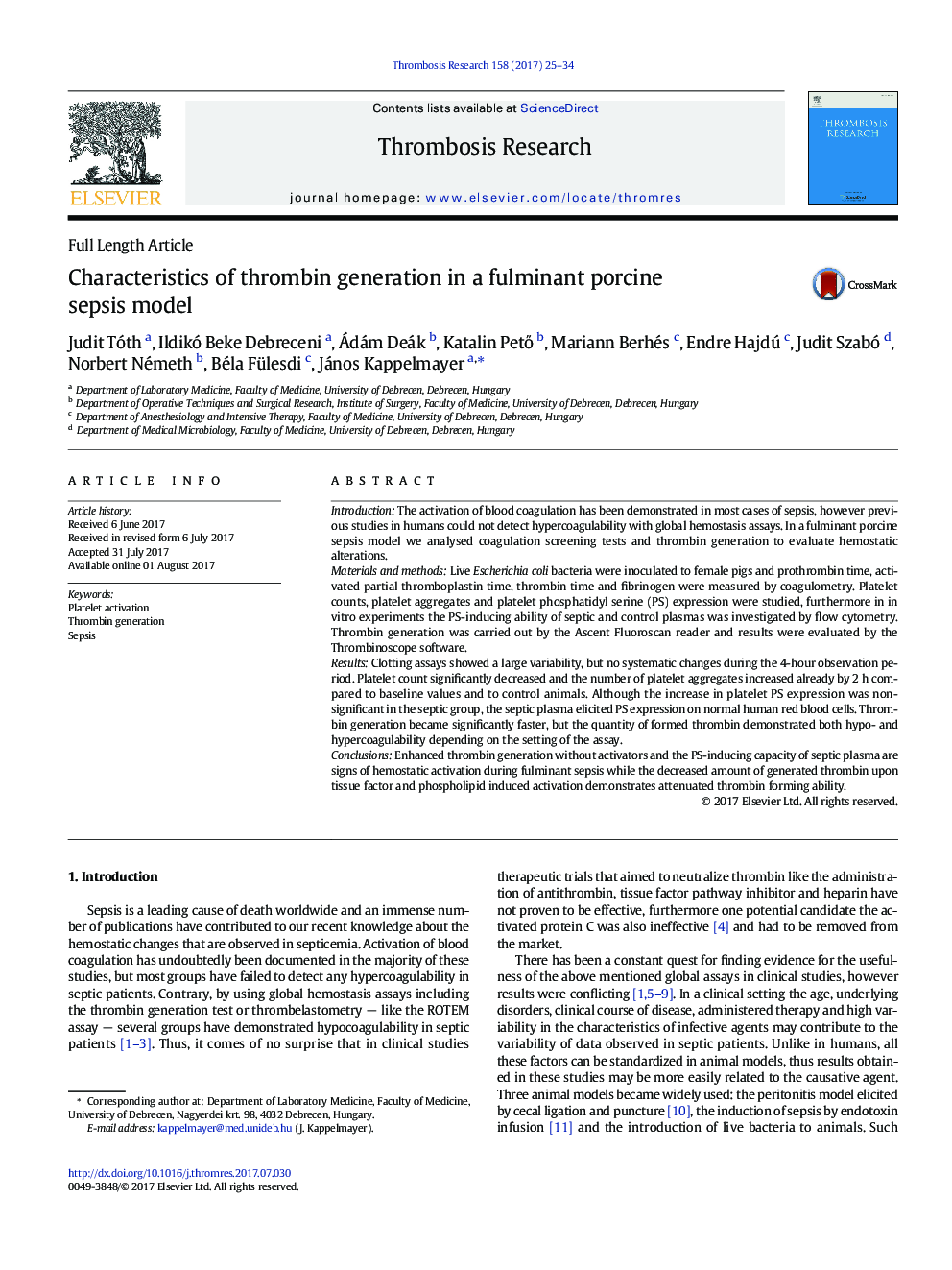| کد مقاله | کد نشریه | سال انتشار | مقاله انگلیسی | نسخه تمام متن |
|---|---|---|---|---|
| 5621789 | 1579185 | 2017 | 10 صفحه PDF | دانلود رایگان |
- Severe porcine sepsis is accompanied by both hypo-and hypercoagulability.
- Porcine plasma induces phosphatidyl serine expression in human red blood cells.
- Thrombin generation test is a useful tool to explore pathological changes in sepsis.
IntroductionThe activation of blood coagulation has been demonstrated in most cases of sepsis, however previous studies in humans could not detect hypercoagulability with global hemostasis assays. In a fulminant porcine sepsis model we analysed coagulation screening tests and thrombin generation to evaluate hemostatic alterations.Materials and methodsLive Escherichia coli bacteria were inoculated to female pigs and prothrombin time, activated partial thromboplastin time, thrombin time and fibrinogen were measured by coagulometry. Platelet counts, platelet aggregates and platelet phosphatidyl serine (PS) expression were studied, furthermore in in vitro experiments the PS-inducing ability of septic and control plasmas was investigated by flow cytometry. Thrombin generation was carried out by the Ascent Fluoroscan reader and results were evaluated by the Thrombinoscope software.ResultsClotting assays showed a large variability, but no systematic changes during the 4-hour observation period. Platelet count significantly decreased and the number of platelet aggregates increased already by 2Â h compared to baseline values and to control animals. Although the increase in platelet PS expression was non-significant in the septic group, the septic plasma elicited PS expression on normal human red blood cells. Thrombin generation became significantly faster, but the quantity of formed thrombin demonstrated both hypo- and hypercoagulability depending on the setting of the assay.ConclusionsEnhanced thrombin generation without activators and the PS-inducing capacity of septic plasma are signs of hemostatic activation during fulminant sepsis while the decreased amount of generated thrombin upon tissue factor and phospholipid induced activation demonstrates attenuated thrombin forming ability.
Journal: Thrombosis Research - Volume 158, October 2017, Pages 25-34
